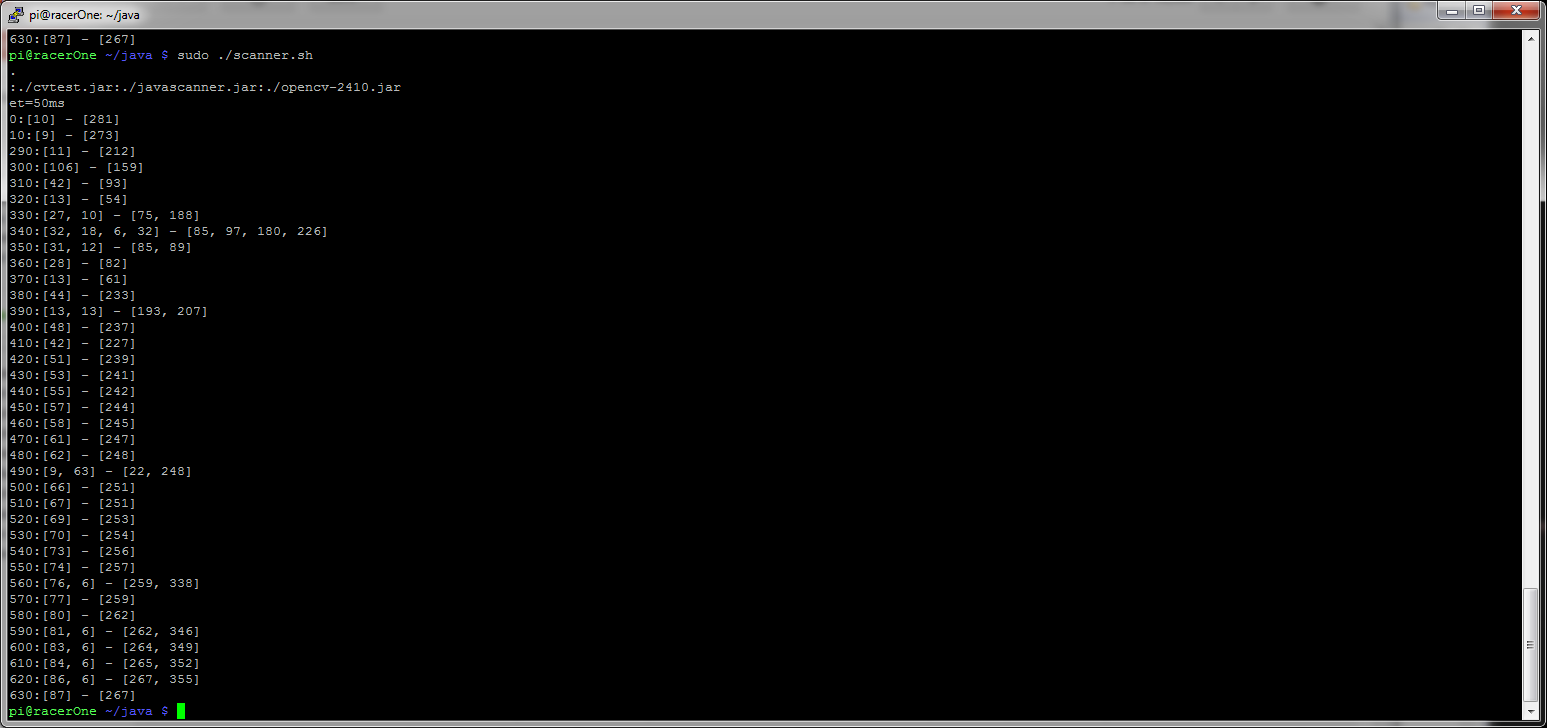
- #Put opencv for java on raspberry pi 1080p
- #Put opencv for java on raspberry pi install
- #Put opencv for java on raspberry pi drivers
Some makers found issues when trying to open the camera ( "Assertion failed" error messages). Click your mouse on the video window, before pressing. To finish the program, you must press the key on your keyboard. To execute, enter the command: python simpleCamTest.py You can alternatively download the code from my GitHub: simpleCamTest.py If it is not your case, comment or delete the "flip" command line. Note that I rotated my camera vertically due the way it is assembled. The above code will capture the video stream that will be generated by your PiCam, displaying both, in BGR color and Gray mode. Gray = cv2.cvtColor(frame, cv2.COLOR_BGR2GRAY)
#Put opencv for java on raspberry pi drivers
Once you have all drivers correctly installed, enter the below Python code on your IDE: import numpy as npįrame = cv2.flip(frame, -1) # Flip camera vertically In case you get an errar like: OpenCV Error: Assertion failed, you can try solve the issue, using the command: sudo modprobe bcm2835-v4l2 You must have the camera enabled when you ran through Adrian's tutorial, otherwise, the drivers will not be installed correctly. I am assuming that you have a PiCam already installed on your Raspberry Pi. Once you have OpenCV installed in your RPi let's test to confirm that your camera is working properly. The above Terminal PrintScreen shows the previous steps. The 3.3.0 should appear (or a superior version that can be released in future). You can also check the OpenCV version installed: cv2._version_ If no error messages appear, the OpenCV is correctly installed ON YOUR PYTHON VIRTUAL ENVIRONMENT. Inside the interpreter (the ">" will appear), import the OpenCV library: import cv2 Now, enter in your Python interpreter: pythonĪnd confirm that you are running the 3.5 (or above) version.
#Put opencv for java on raspberry pi install
Similarly, any Python packages installed in site-packages of cv will not be available to the global install of Python. So, any Python packages in the global site-packages directory will not be available to the cv virtual environment. If you see the text (cv) preceding your prompt, then you are in the cv virtual environment: (cv) calls the attention that the cv Python virtual environment is entirely independent and sequestered from the default Python version included in the download of Raspbian Stretch. Next, let's enter on our virtual environment: workon cv Let's go to our virtual environment and confirm that OpenCV 3 is correctly installed.Īdrian recommends run the command "source" each time you open up a new terminal to ensure your system variables have been set up correctly.

Once you finished Adrian's tutorial, you should have an OpenCV virtual environment ready to run our experiments on your Pi. I advise you to do the same, following his guideline step-by-step. I tried several different guides to install OpenCV on my Pi.

I am using a Raspberry Pi V3 updated to the last version of Raspbian (Stretch), so the best way to have OpenCV installed, is to follow the excellent tutorial developed by Adrian Rosebrock: Raspbian Stretch: Install OpenCV 3 + Python on your Raspberry Pi.
#Put opencv for java on raspberry pi 1080p
5 Megapixels 1080p Sensor OV5647 Mini Camera Video Module - US$ 13.00.


 0 kommentar(er)
0 kommentar(er)
